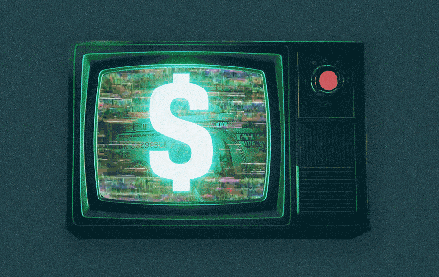Advertising on connected TV can be a big adjustment for traditional TV advertisers accustomed to buying ads against specific shows to reach broad audiences.
That kind of hesitancy has created an opportunity for direct-to-consumer and other upstart brands, which are more flexible, and are now dabbling in TV, to define the connected TV advertising landscape.
In the same way that Google’s and Facebook’s audience-based, biddable ad platforms enabled small- and medium-sized digital marketers to compete on an equal playing field with big-budget brand marketers, the audience-based nature of connected TV advertising is likely to democratize the future of the internet-based TV advertising market.
“As [connected TV] becomes more biddable, you’re going to see the same equalizer take root in TV,” Kait Boulos, vp of strategy and partnerships at Varick, said on stage at Digiday’s Future of TV Summit held this week in Palm Springs, California.
On traditional TV, established marketers are able to lock up inventory through multimillion-dollar upfront deals and lock out so-called challenger brands as a result. But because ads can be targeted to specific audience segments on connected TV, challenger brands can take advantage of their experience pinpointing audiences on platforms like Facebook and take connected TV impressions away from the established marketers unwilling to pay the higher prices that correspond to narrowly targeted ads. “It’s not how much you’re spending but how wisely you’re spending,” Boulos said.
Throughout the event, attendees acknowledged that traditional TV advertisers can be put off by connected TV’s comparably higher prices. These advertisers are used to paying $10 to $12 CPMs to advertise on cable TV networks and skeptical of why they should pay $20 to $40 CPMs to advertise on connected TV. “When you start to look at a $30 CPM, you’re asking a lot of questions,” said one attendee.
Those questions generally boil down to one primary query: Is connected TV worth the higher price? The answer is yes, according to attendees. To convince their TV-loving clients that connected TV is worth the money, agency execs in attendance said they focus those clients’ attention on waste.
Sure, advertising on traditional TV may only cost $10 for every thousand impressions, but how many of those impressions are reaching the advertiser’s intended audience and how many are reaching viewers outside the target audience that happen to also be tuning into a given show? Conversely, ads on connected TV can be targeted so that they would only be seen by the intended audience, assuming the data used to inform that targeting is accurate. And because of that targeting, the advertiser doesn’t have to spend as much money in total to reach the intended audience.
“The CPM can be higher [for connected TV ads], but the actual dollars spent are lower than linear TV because of targeting,” said one attendee during a closed-door session for brand and agency execs.
That’s not to say that digital marketers won’t initially balk at connected TV’s high CPMs, which are “more than challenger brands are used to paying in search and social,” said Boulos. But because these advertisers understand what they are getting in return for that money, they are more willing to tolerate the higher prices.
Subscribe to the Digiday Video Briefing: A weekly email with news, quotes and stats around the modernization of video, TV and entertainment.
More in Future of TV

Future of TV Briefing: How agencies are setting up their programmatic teams for the agentic AI era
This week’s Future of TV Briefing recaps two sessions from last week’s Digiday Programmatic Marketing Summit about how agencies’ programmatic buying teams are evolving.

Future of TV Briefing: The streaming ad upfront trends, programmatic priorities revealed in Q3 2025 earnings reports
This week’s Future of TV Briefing looks at what TV and streaming companies’ latest quarterly earnings report indicate about the state of the streaming ad market.

Future of TV Briefing: The creator economy needs a new currency for brand deals
This week’s Future of TV Briefing looks at why paying creators based on reach misses the mark and what IAB is doing to clear up the creator-brand currency situation.





